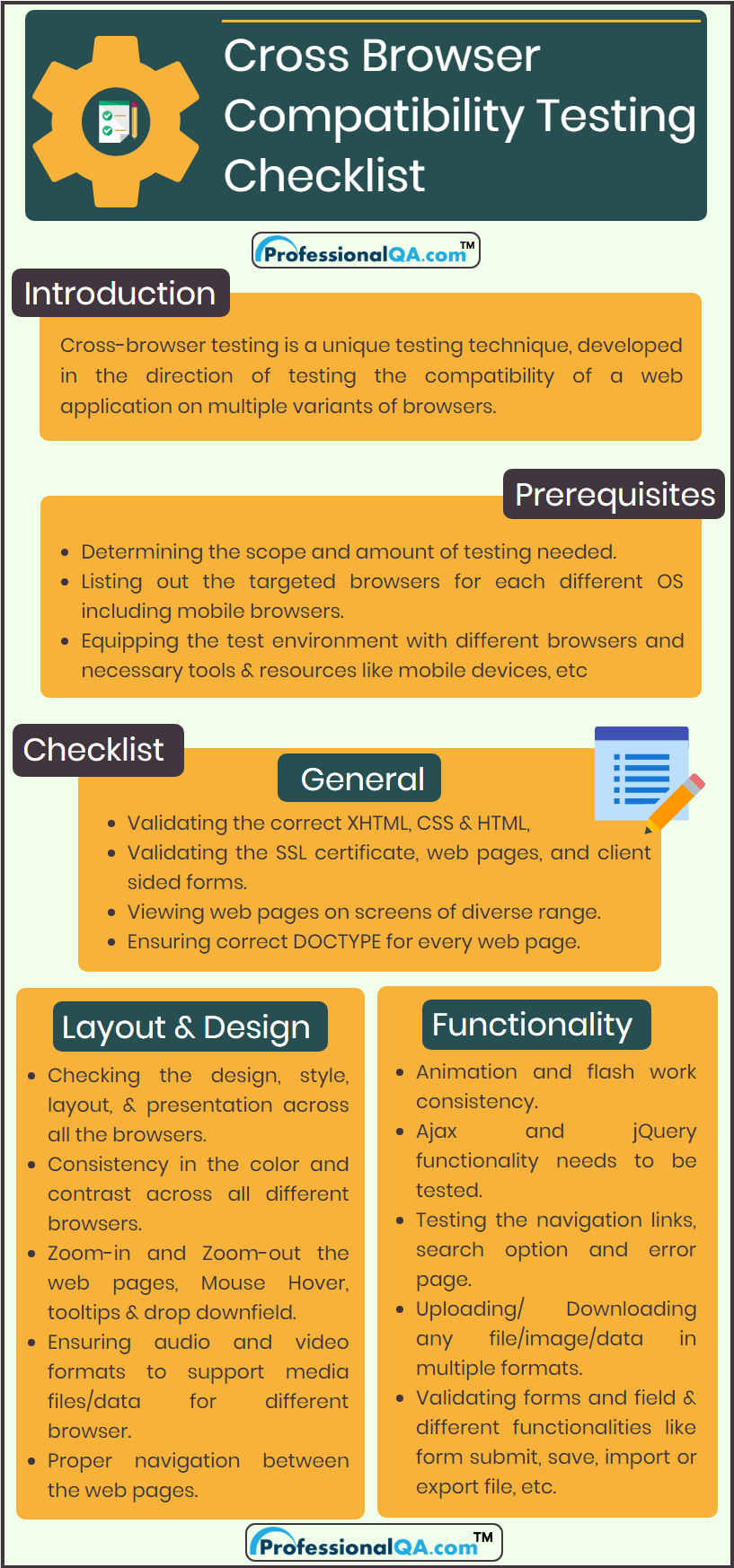Pulse of Information
Your source for the latest insights and updates.
When Browsers Collide: Navigating the Compatibility Conundrum
Discover essential tips to conquer browser compatibility issues and enhance your website's performance. Don't let incompatibility hold you back!
Understanding Cross-Browser Compatibility: Key Challenges and Solutions
Understanding cross-browser compatibility is essential for creating a seamless user experience across various web browsers. The key challenges arising from this necessity include differences in rendering engines, variances in CSS support, and varying JavaScript implementations. For instance, while modern browsers like Chrome and Firefox may handle HTML5 and CSS3 features adeptly, older versions of Internet Explorer may struggle with these advancements. This disparity can lead to inconsistent designs and functional discrepancies, often resulting in frustrating user experiences. Developers must test their websites on multiple browsers and devices to ensure consistent behavior and appearance.
To tackle cross-browser compatibility issues, employing robust solutions is crucial. Responsive design techniques, such as fluid grids and flexible images, assist in maintaining layout integrity across different viewports. Additionally, leveraging CSS resets can help provide a more uniform baseline across browsers. Feature detection tools, like Modernizr, can identify specific browser capabilities, allowing developers to implement fallbacks for unsupported features. By integrating these practices into the development process, teams can significantly enhance their web applications' compatibility across various platforms, ultimately leading to improved user satisfaction.

Top 5 Tools to Test and Ensure Browser Compatibility
Ensuring browser compatibility is crucial for delivering a seamless user experience across different platforms. Here are the top 5 tools that can assist you in testing and ensuring that your website looks great on all browsers:
- BrowserStack: This tool allows you to test your site on a variety of real devices and browsers, ensuring that you catch any compatibility issues before your audience does.
- Lambdatest: An excellent tool for cross-browser testing, Lambdatest enables you to conduct live interactive testing and access automated screenshots across over 2000 browsers.
- CrossBrowserTesting: Offering both manual and automated testing capabilities, this tool helps you identify rendering issues and bugs in real-time.
- Responsinator: A simple tool for checking how responsive your site is on different devices, it focuses on visual elements and alignment.
- Modern.IE: While Microsoft’s tool has evolved, it still serves as a great resource for testing Internet Explorer and Edge compatibility.
What to Do When Your Website Looks Different Across Browsers?
When you notice that your website looks different across various browsers, the first step is to diagnose the issue. Start by checking for any browser-specific styles in your CSS. Use tools like the browser’s developer console to inspect elements and see how styles are applied. You might find that certain CSS properties are interpreted differently by browsers, which can lead to inconsistencies in layout and design. Testing your website across popular browsers such as Chrome, Firefox, Safari, and Edge is essential to pinpoint the discrepancies and ensure a uniform user experience.
Once you have identified the issues, it’s time to implement fixes. Begin with using CSS resets or normalize.css to create a consistent base style across browsers. Additionally, consider using feature detection through libraries like Modernizr to ensure that your site adapts gracefully to differences in browser capabilities. Don’t forget to regularly validate your HTML and CSS through W3C tools to catch any errors that might contribute to these discrepancies. By following these steps, you can enhance your website's compatibility and provide a seamless experience for all users, regardless of their browser choice.